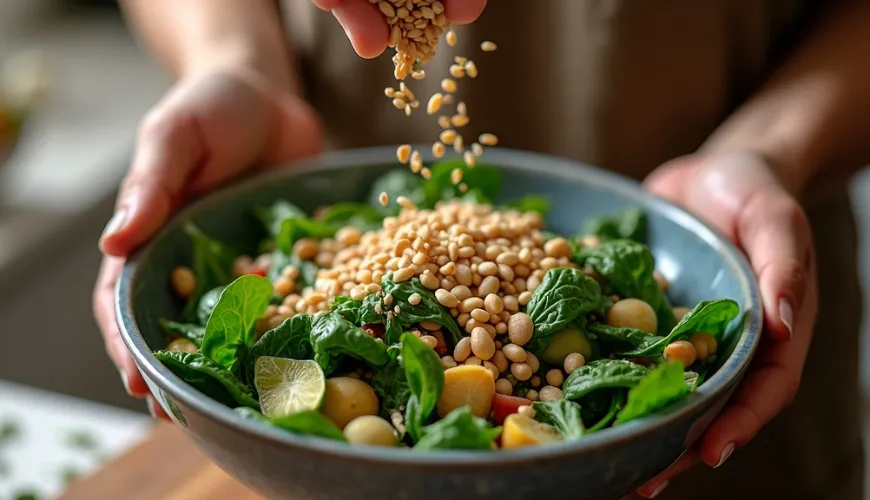
How to Create a Divided Diet Meal Plan and Feel Better

How Segregated Diet Can Transform Your Weekly Menu and Health
In today's world, where more people are turning to a balanced lifestyle, finding a simple and effective way of eating is gaining importance. One method that has been making a comeback in recent years is the separated diet. It's not new — its roots go back to the 20th century — yet it is gaining new followers because it combines simplicity, meaningfulness, and a positive impact on digestion. So what exactly is a separated diet and what might a weekly menu look like?
What is a Separated Diet and Why Do People Seek It?
A separated diet is a method of eating that separates foods based on their composition. The basic principle is that proteins and carbohydrates are not combined in a single meal. The aim is not to count calories or restrict portions but to improve digestion and lighten the body. According to proponents of this method, the body processes proteins and carbohydrates using different digestive enzymes and in different environments (acidic and alkaline), which can lead to poorer digestion, bloating, or fatigue when combined.
Although scientific studies are not unanimous in evaluating the effectiveness of this method, many people report subjective improvements — more energy, lightness after eating, or even weight loss. The separated diet also emphasizes natural, minimally processed foods, which contributes to better vitality on its own.
There are various methods of separated diet, but one of the most well-known is the one popularized by Dr. William Howard Hay. He introduced a simple division of foods into three groups: protein, carbohydrate, and neutral. Neutral foods, such as most vegetables, can be combined with both main groups. This unlocks a wide range of possibilities for creating a weekly menu based on a separated diet without having to give up favorite flavors.
How Does a Separated Diet Look in Practice?
Let’s imagine a typical workweek. On Monday morning, one might have bread with avocado and vegetables — a carbohydrate meal. For lunch, chicken with grilled zucchini and salad, which is a protein meal, could be on the menu. For dinner, a vegetable soup with lentils, falling into the neutral to slightly carbohydrate category, might be served.
This rhythm is simple, clear, and allows the body ample time for digestion. Moreover, it is easy to adhere to the rule: one food group per meal + neutral foods. The key to success is variety and planning — which is why having a separated diet menu for the whole week at hand is worthwhile.
Sample Separated Diet Menu for a Week
Below is an example menu that respects the principles of a separated diet. The meals are simple, focusing on freshness and seasonal ingredients. This plan is suitable for beginners and those looking to spice up their regular routine.
Monday
- Breakfast (Carbohydrate): Whole grain bread with avocado, tomato, and sprouts
- Lunch (Protein): Grilled tofu with spinach and roasted zucchini
- Dinner (Neutral): Carrot soup with ginger and pumpkin seeds
Tuesday
- Breakfast (Carbohydrate): Oatmeal with apple and cinnamon
- Lunch (Protein): Baked salmon with broccoli and arugula salad
- Dinner (Neutral): Beetroot, carrot, and pumpkin oil salad
Wednesday
- Breakfast (Carbohydrate): Sourdough bread with hummus and radishes
- Lunch (Protein): Chickpea falafel with roasted eggplant and tahini sauce
- Dinner (Neutral): Vegetable risotto with oyster mushrooms
Thursday
- Breakfast (Carbohydrate): Spelt pancakes with berries
- Lunch (Protein): Tempeh with green beans and roasted carrots
- Dinner (Neutral): Pumpkin cream with coconut milk
Friday
- Breakfast (Carbohydrate): Millet porridge with banana and nuts
- Lunch (Protein): Turkey with cauliflower puree and red cabbage salad
- Dinner (Neutral): Baked peppers stuffed with vegetables
Saturday
- Breakfast (Carbohydrate): Whole grain toast with peanut butter and pear slices
- Lunch (Protein): Grilled camembert with arugula and red onion
- Dinner (Neutral): Creamy parsnip and parsley soup
Sunday
- Breakfast (Carbohydrate): Smoothie bowl with oats, chia, and fruit
- Lunch (Protein): Roasted chicken with baked pumpkin and salad
- Dinner (Neutral): Sautéed vegetables with olive oil and seeds
As you can see, a weekly separated diet menu can be varied, tasty, and fun to prepare. Many people are surprised at how easily it adapts to a regular lifestyle — even in families where meals are shared.
Why Does It Make Sense?
One of the main benefits of a separated diet is that it naturally avoids heavy combinations that can burden digestion. This is appreciated by people who suffer from frequent bloating, fatigue after meals, or fluctuating energy levels throughout the day. The separated diet also often leads to increased vegetable consumption and greater awareness of what one eats.
Another plus is that it doesn’t require any special products, supplements, or complex calculations. Just understand the basic principles and be willing to experiment. As American physician and nutrition pioneer William Hay said, “Once you understand what your body needs, you'll stop eating just by taste and start eating consciously — for health."
In practice, it also shows that following these rules can lead to weight loss, even though it’s not the primary goal. The body simply works more efficiently, shedding excess and managing energy better.
Experiences of people who have tried a separated diet are often positive. For instance, Mrs. Marta from Brno shares: “I started the separated diet mainly for digestion, but it ended up helping me lose weight and feel lighter. Plus, it made me cook more at home and discover new flavors."
What to Take Away?
A separated diet is not a strict diet or a miraculous recipe for slimness. It's more of a way to return to the roots of healthy eating, to listen more to one's own body, and to maintain energy throughout the day. A weekly menu based on a separated diet can serve as practical inspiration on how to start — whether you want to improve digestion, lose weight, or simply eat with more awareness.
In today’s pace, where what we eat is often forgotten, the simplicity of a separated diet can be a welcome return to naturalness. And once a person masters the basic rules, dozens of tasty options open up, harmonizing with the season, personal preferences, and a healthy lifestyle.

